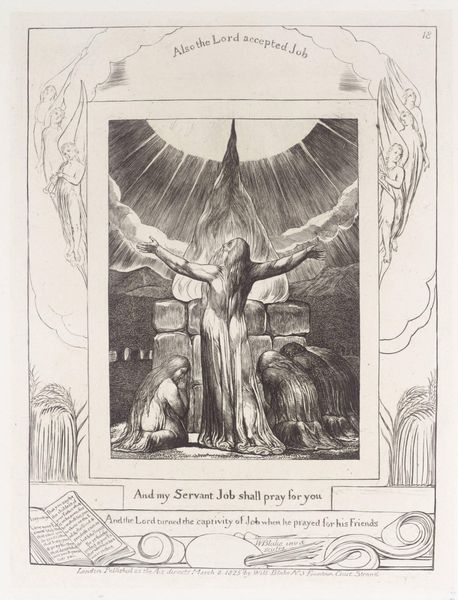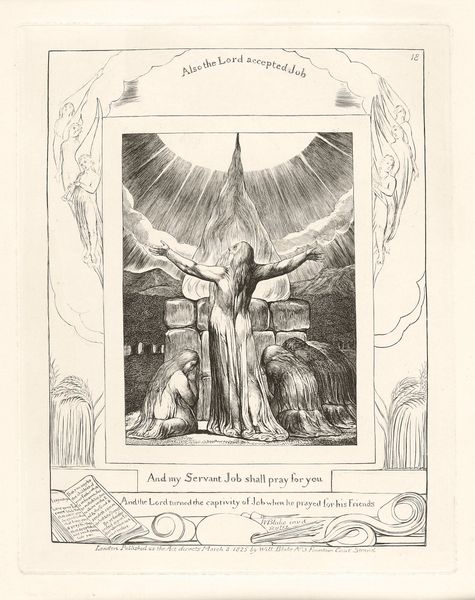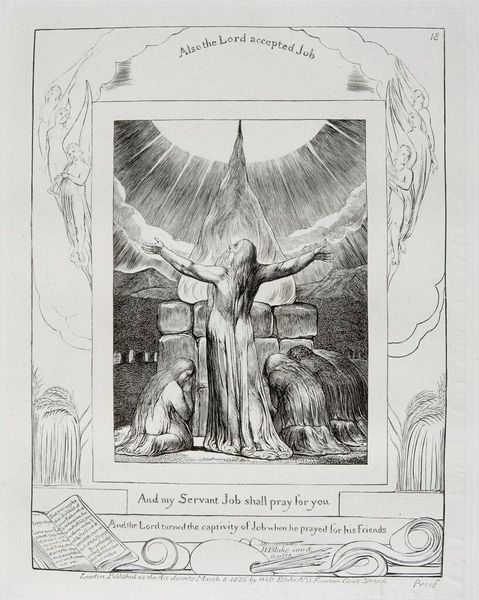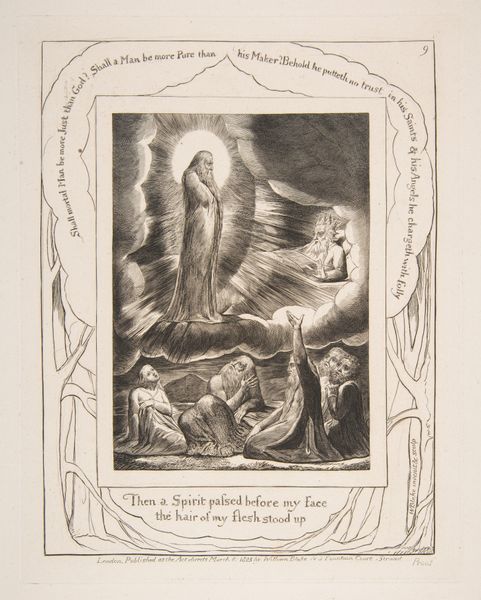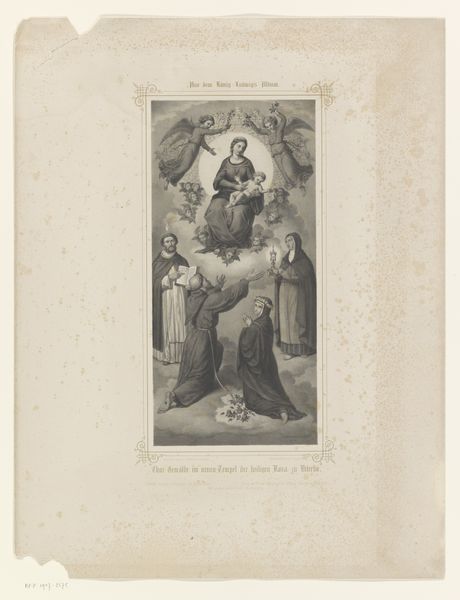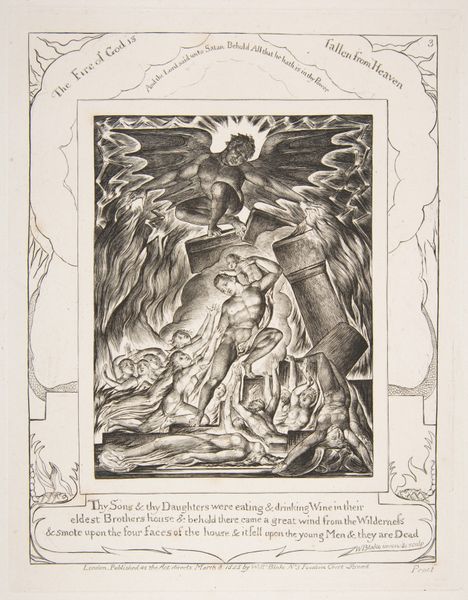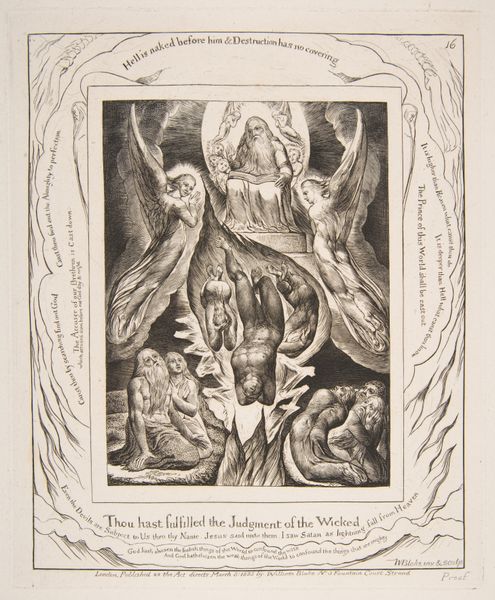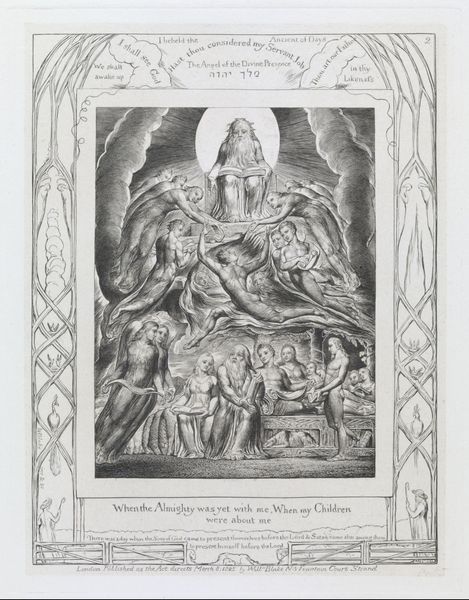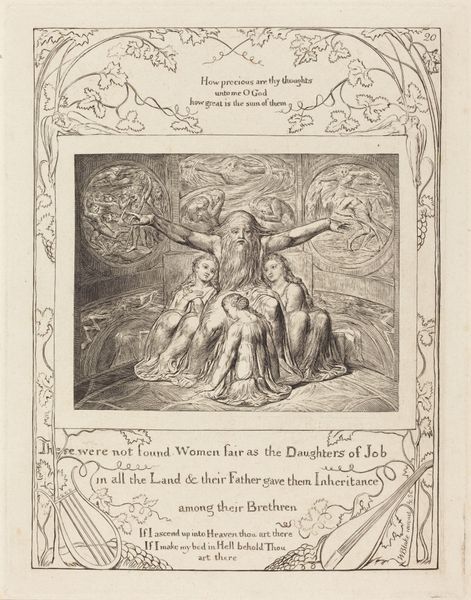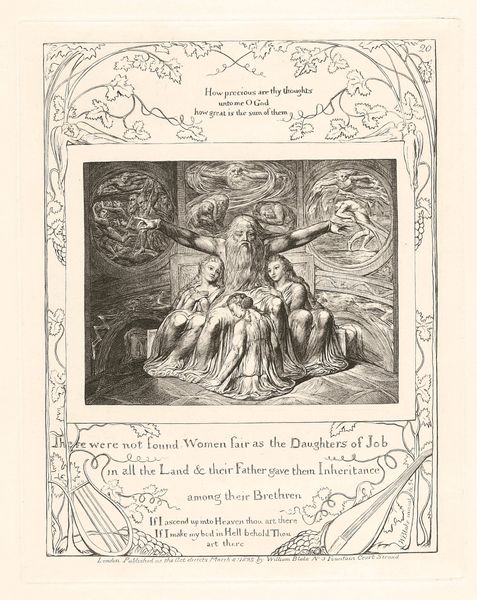
print, engraving
# print
#
figuration
#
romanticism
#
line
#
history-painting
#
engraving
Copyright: National Gallery of Art: CC0 1.0
Curator: Here we have William Blake’s engraving, “Job’s Sacrifice,” created around 1825, a piece brimming with symbolism and executed in that distinctive linear style he’s so well-known for. What is your first impression? Editor: Stark. It is immediately stark. The severity of the lines against the stark white paper produces this intense drama, that single source of radiating light amplifies it all. It's pure, unadulterated spiritual drama. Curator: Blake was deeply concerned with the conditions of artistic production, with who had access to art and what kind of labor was valued. Considering Blake’s radical political beliefs, how might this particular print and its multiple replications engage with issues of artistic labour and consumption? Editor: Interesting point. Look at the architectural elements – those precise blocks of the altar. It establishes a hierarchy. Job is placed at the highest register. He is the divine medium through whom blessing is dispensed. Compositionally it forces your eye upwards along this rigid visual ladder. Curator: Yes, but think about it this way. This image was not destined for a palace; it was intended to be replicated and shared. Its creation and circulation democratized a biblical story and placed it within reach of a broader, potentially working-class, audience. The raw materiality of the engraving, a more accessible medium, makes a statement about challenging elitist art markets. Editor: Perhaps, but the stylistic choices undeniably heighten the emotionality of the scene. The expressiveness in Job’s upraised arms, that cloud with the ethereal presence suggests transcendence and spiritual revelation—it communicates the emotional intensity of divine favor and forgiveness that characterizes the narrative. Curator: True, yet Blake is also drawing our attention to labor; look closely and see how it asks us to consider not just what is depicted but how this scene, imbued with religious sentiment, also represents labour, sacrifice and class relations that impact social experience and our access to artistic expression. Editor: Ultimately, even focusing on the material processes, the stark linear purity directs me to the thematic intent – a raw, spiritual experience articulated via stark lines that convey this idea that Job’s suffering led him closer to transcendence. Curator: A lovely encapsulation. And from the perspective of the printing press and access to distribution for many rather than a few, one of the most successful of Blake's designs for the Book of Job engravings.
Comments
No comments
Be the first to comment and join the conversation on the ultimate creative platform.

